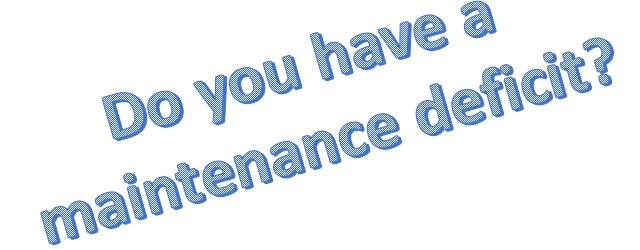Are you ready to ramp back up after your Covid-19 slowdown?
Part 1 – Did you fall into the reliability trap?
Covid scared us all! Here you can see two Red Pandas with their version of a threatening response. When threatened, we will have one of three reactions – fight, flight, or freeze.
Our businesses also have similar responses. A few have fought – and they “pivoted.” Some fled – they folded up and went away. Many simply froze – they halted just about everything. If your business froze, then this article is for you.
A frozen business may have survived, but it also hasn’t changed – for the better, or for the worse. It also hasn’t readied itself for improvement or restart. During the pandemic, you probably continued to operate, albeit at reduced rates, and your physical assets continued their inexorable deterioration. By now, if you’ve done nothing to arrest that decline, they may be in worse shape than you realize.
With lowered levels of output, there were lower levels of asset stress. Your equipment may actually have worked well at reduced levels. But that may have also lulled you into a false sense of security.
To survive in a slowed-down economy every chance to conserve cash was used. Improvement opportunities were put on hold, contractors and consultants let go, overtime limited or stopped, training stopped, etc. Health concerns led to changed shift arrangements to minimize contacts, staffing was minimized, and some began to work at home. Everyone slowed down including supply chains.
The movement of goods shifted more towards consumer goods and away from industrial goods. Lead times for parts and equipment have grown. Reduced production capacity and longer lead times have become part of the “new normal” – at least during the pandemic.
Constantly changing, inconsistent and confusing streams of recommendations and restrictions by our various governments, dragging on and on, have kept uncertainty high. When will it end?
There’s light at the end of the tunnel, but no one knows just when it will end. And, what will our businesses be like when the pandemic ends? What will have changed?
Lowered demand has driven prices up. Even at lowered outputs, pricing levels are keeping some companies profitable. What will happen to prices when demand climbs and additional supply comes on-stream? Prices are likely to fall and we’ll all need to ramp back up.
The pressure to produce will eventually return and maybe even reach higher levels than before. Demand will almost certainly rise. Some are forecasting an explosive period of growth like we had 100 years ago – in the roaring twenties. If demand rises quickly those who can meet it first will be winners.
CEOs realize that “operational efficiency” is a key to sustaining their businesses in the longer term. A recent study by PwC confirms that as the #1 or #2 priority – it’s a near tie with “pursue organic growth”.
“Organic growth” implies building on your existing foundations. Solid foundations come from “operational efficiencies”. If you’ve done nothing to enhance operational efficiency are you really positioned to support your CEO’s priorities?
What have you done to ensure reliable operations when you ramp back up?


